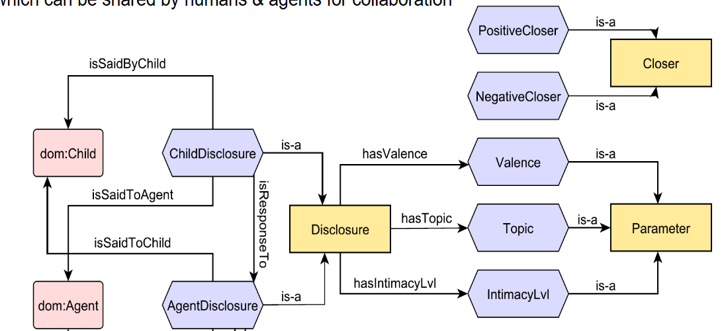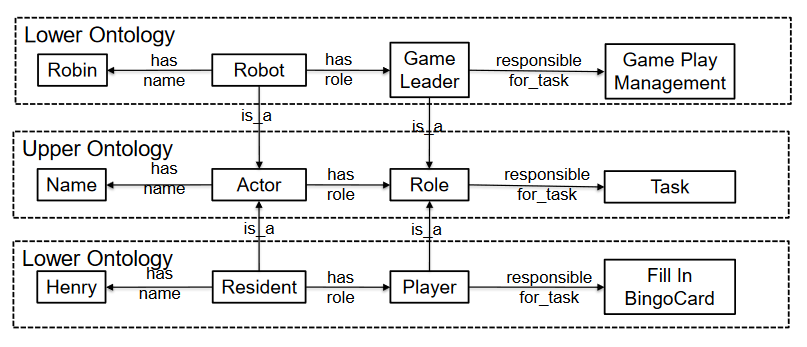Design Patterns and Ontology
Before starting with the Design Patterns you should figure out for whom you are designing the technology for:
Personas
- First Step is to create Personas to get a feel about who the audience is
- Persona is an individual character, try to make the person "come alive" by adding detailed descriptions
- Profile of a Persona should include:
○ General information like gender, age, living situation, job/education, hobbies, former life
○ Personal goals
○ Stereotypes of the person group, but also untypical characteristics "go beyond stereotypes" - You should provide one persona for each Stakeholder, sometimes more than one per Stakeholder can be helpful when the character differs a lot per person
Storyboard
- Create a story with the Personas as the main character
- Focus on the interactions and relations of the different persons and how do they interact with the robot
Then you can start designing the pattern:
Design Patterns
"A reusable solution to a recurring problem. [Design] patterns try to
capture the common invariant properties of the problem and the
essential relationships needed to solve the problem. (...) They are
abstract solutions that allow a designer to reuse ideas that worked in
the past for commonly faced problems."
*Use these factors in your design patterns:
○ Behavior Pattern
○ Positive effects
○ Negative effects
○ Claims
Team Design Patterns (TDP)
- Pattern that shows how the team works together
- Consists of several design patterns which are connected with arrows
- Divided into physical (brick above heads) and cognitive work (colored heads)

Interaction Design Patterns (IDP)
- Shows interaction between two people
Ontology
A specification of a conceptualization. That is, an ontology is a
description of the concepts and relationships that exist within a
certain domain.
The Ontology provides a language for the interaction, which ensures a mutual understanding.
Meaning the robot need to has a basic understanding of our world, you have to represent common (abstract) concepts both, robot and human, need to interact (examples: emotions, (music) genres)
example:
Frame-based Ontology
- Frames represent stereotyped situations in the form of a group of
interrelated concepts with a fixed structure (Minsky, 1975). - Schemata represent situational experiences that are stored in long-
term memory in the form of patterns (Tannen, 1993). - Frames can be regarded as schemata, representing structures of
expectation constructed from previous experience.
